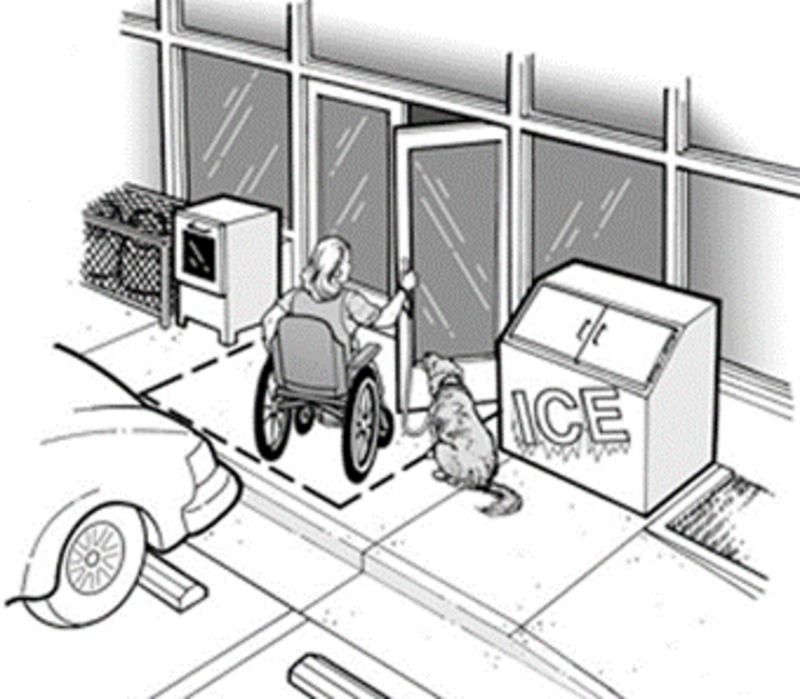
Did you know that The ADA requires that places of public accommodation remove architectural barriers in public areas of existing facilities when it is "readily achievable" to do so? What does this mean? Well, let us take a look at what types of businesses this applies to.
Places of public accommodation are establishments that provide goods and services to the public. A broad range of businesses (both for and non-profit) fall under this requirement such as: museums, stores, restaurants, hotels, recreational facilities, medical offices, banks, schools, social service agencies and other places that serve the public. If you own, operate, or lease space to a place that provides goods and services to the public, this applies to you.
“Readily achievable” barrier removal essentially means "easily accomplishable without much difficulty or expense." This is determined on a case-by-case basis, relative to a particular business's resources and existing barriers, etc. This requirement is based on the size and resources of a business. This is a general overview for the purposes of this blog.
Oftentimes, the removal of barriers can be achieved by making simple changes to the physical environment. For instance, think about that big potted rubber tree plant that is right outside the bathroom door. You know, the one that was a birthday gift from Aunt Karen? You may have gotten some compliments about it, but there is a problem – a huge problem. Because it is along the wall within 18 inches of the door opener on the pull side of the door, it creates an obstruction for a number of people with mobility difficulties. The good news is, in this case, the solution is simple – relocate the plant.
How do you know if your establishment is accessible? When was the last time an accessibility assessment was done of your facility? If you have never done one or can’t remember the last time an assessment was done, now is a great time to start. Improving access is good for business. Being accessible makes it easy for people to receive the goods and services you have to offer. Providing good access benefits: people with disabilities, older adults, shoppers with heavy bags, delivery people, caretakers of young children, employees with a disability, and everyone when it is busy. In addition, it also satisfies your legal obligation under the ADA.
Here are a few ideas for becoming more accessible:
- Restriping parking lot to create accessible parking spaces.
- Widening doorways or installing offset door hinges to widen doorway.
- Repositioning shelves.
- Rearranging vending machines display racks or other furniture to create adequate maneuvering space.
- Installing a full-length bathroom mirror.
- Installing a ramp to entrance.
- Installing accessible door hardware.
- Making sure the main route of travel in your facility is free of obstructions.
- Having a clear line of sight from main desk to entrance in case a customer/client needs assistance.
- Having a service counter that is accessible for a mobility device user.
As always for more information on accessibility and removing barriers, contact the Rocky Mountain ADA Center. Here are a couple of other tools to aid you in your journey to provide great access:
For more information on Solutions for Barrier Removal https://archive.ada.gov/reachingout/t3regl4.html
To do your own accessibility assessment, download the Checklist for Readily Achievable Barrier Removal in Existing Facilities. https://www.adachecklist.org/doc/fullchecklist/ada-checklist.pdf
Tina Bennet is the ADA and Accessibility Coordinator for Wyoming Independent Living. Wyoming Independent Living is a center for independent living (CIL) provides services to persons with disabilities in Eastern Wyoming. In her role as ADAC for a title 3 organization, her key functions are:
- Providing training on various ADA topics
- On site accessibility assessments of facilities
- Technical assistance for ADA and housing access issues
- Networking with businesses and other title 3 Places of Public accommodation
Tina's passion is to see her state and region become as accessible as possible.
For more information, check out our website at: https://www.wilr.org/